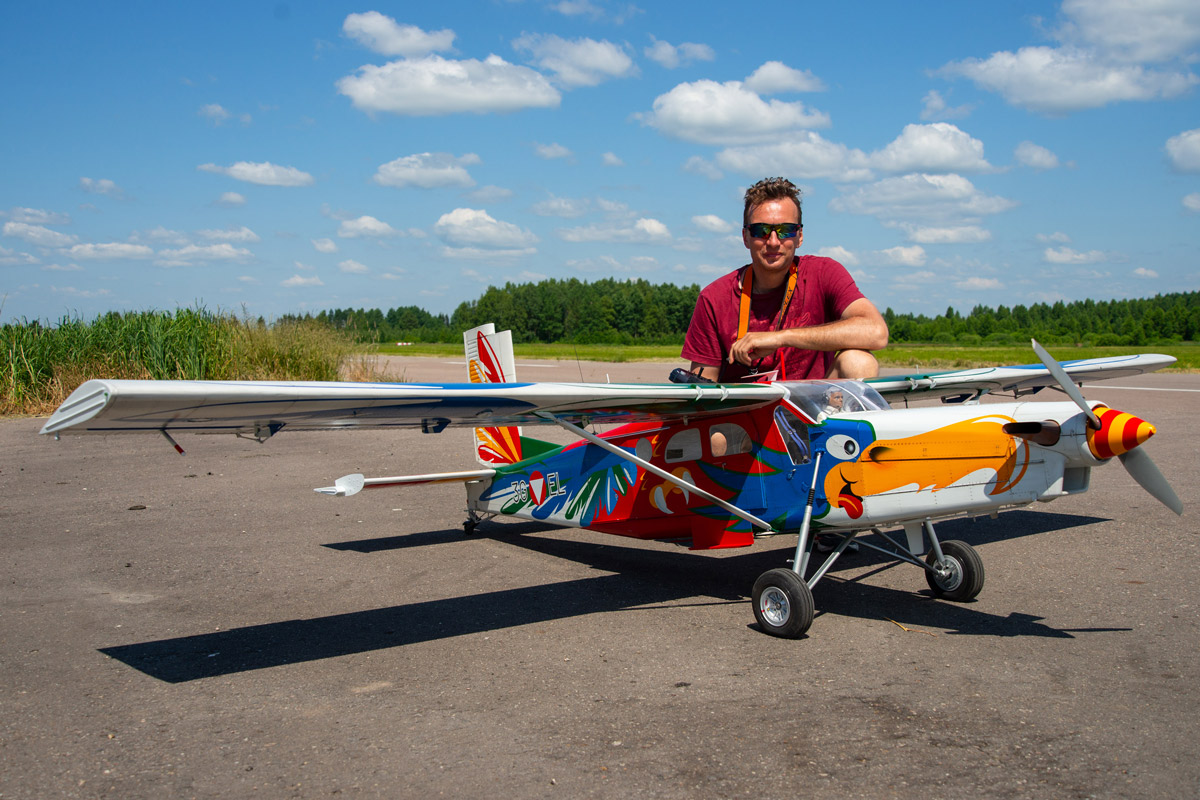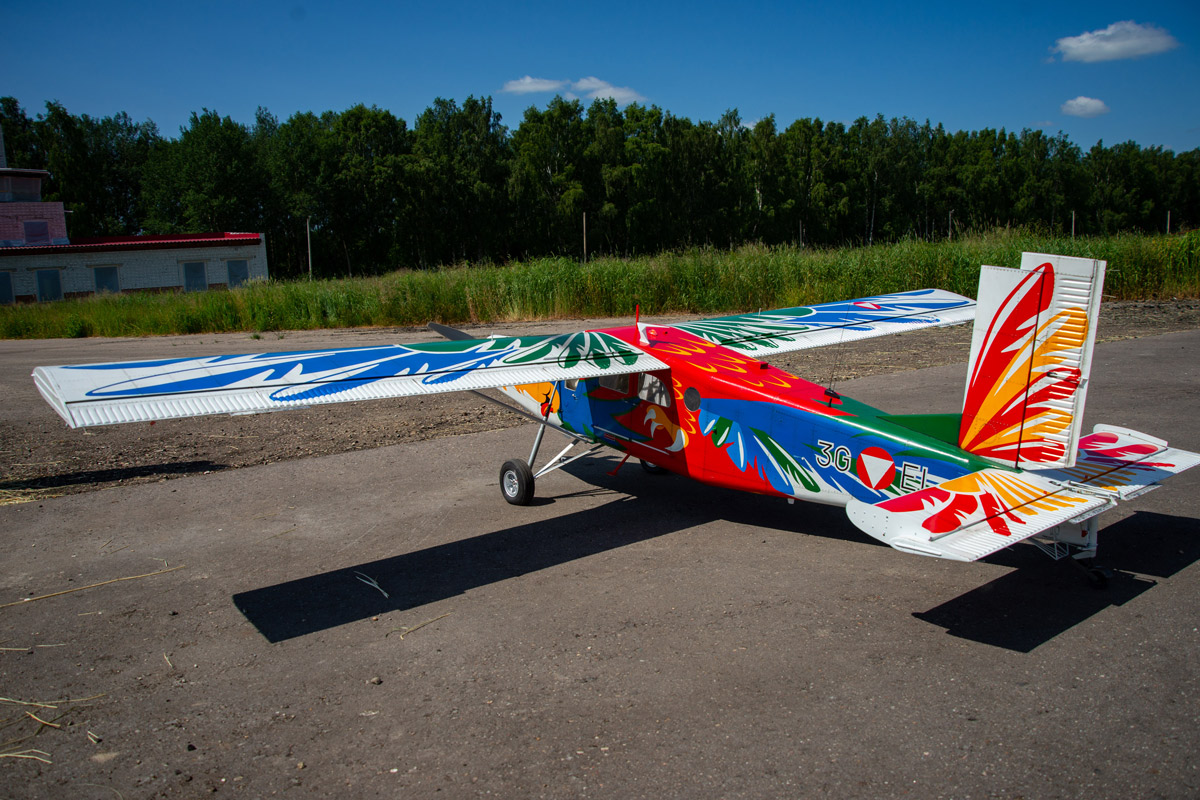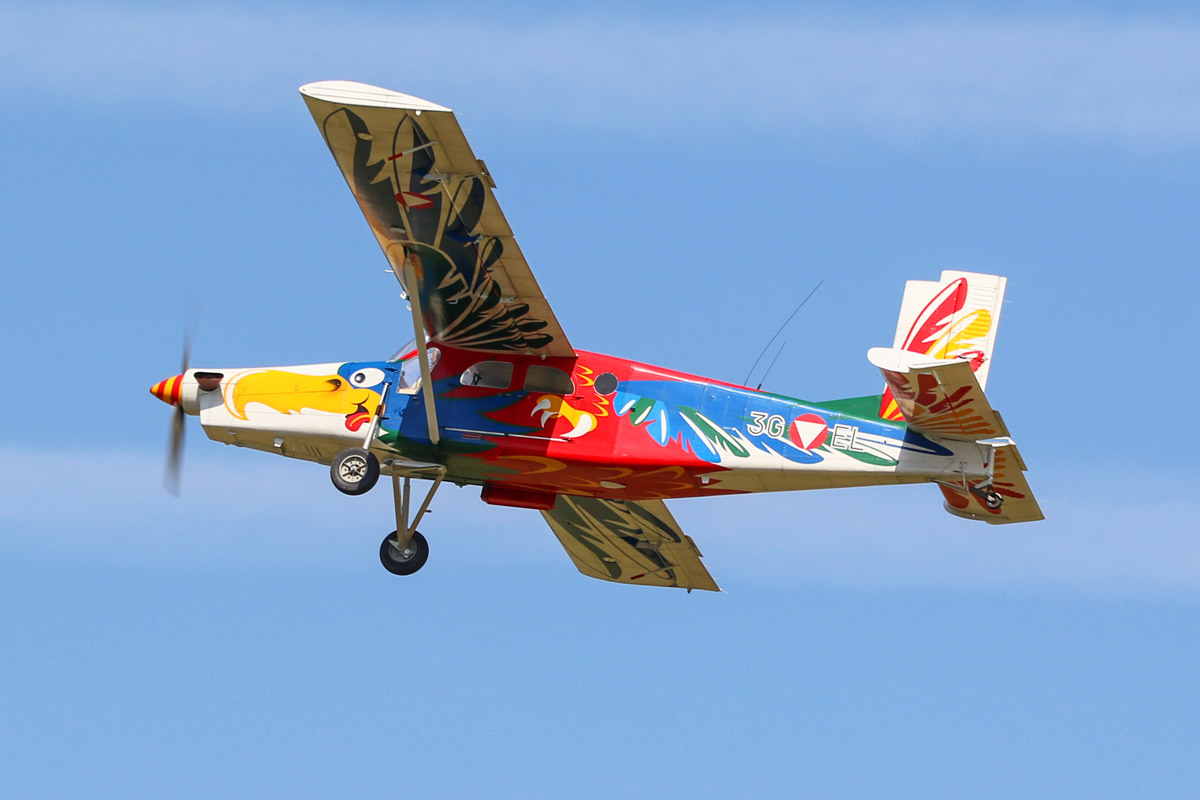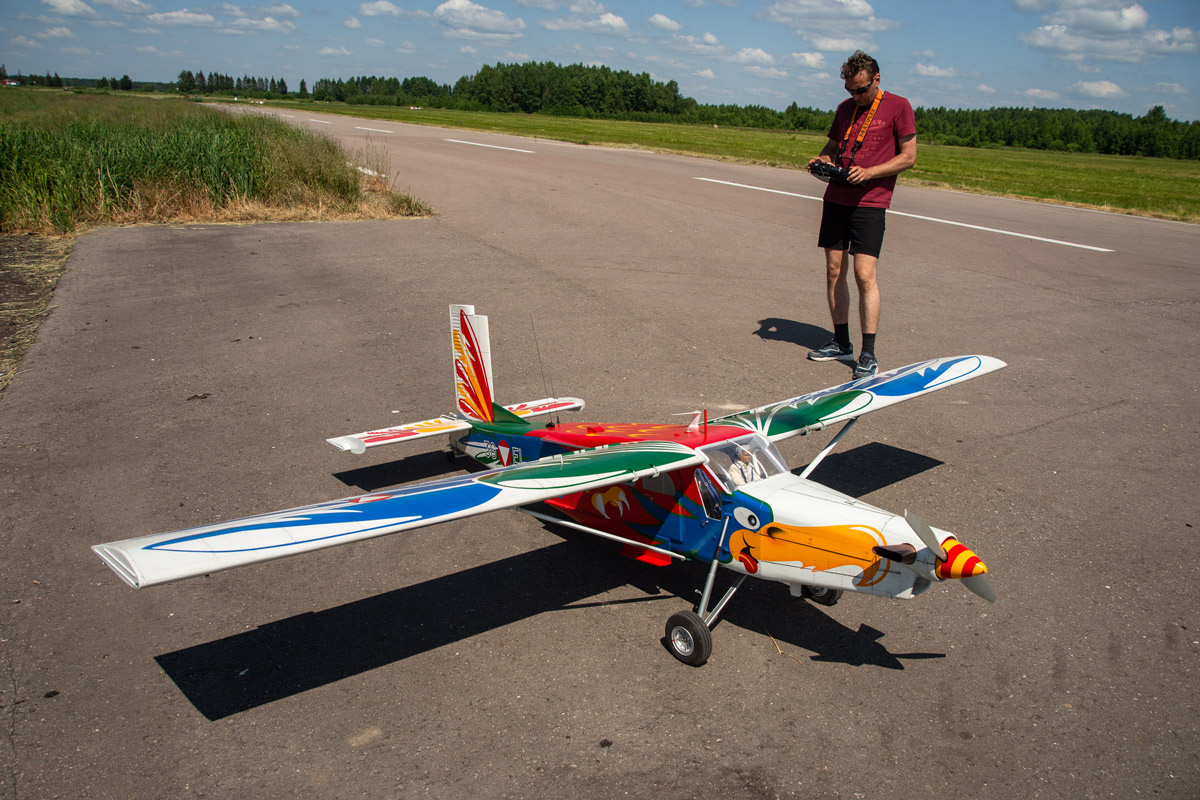Dmitry Kondrashov will present the PC-6 Porter at the World Championship in Norway, 2021
Nesterov Aviation is pleased to introduce Dmitry Kondrashov, a man who’s been in love with aviation ever since he was a boy, and although he did not become a pilot, he still operates various types of aircraft, including the famous Pilatus PC-6 Porter.
In order to witness the PC-6 flown by Dmitry we went to the Staritsa airfield in the Tver region. This trip was worth it, the PC-6 remote-controlled model aircraft differs from the original only in size and looks amazing in the sky.
Pilatus PC-6 has been in operation since 1959, it has become a legendary aircraft, known throughout the world simply as Pilatus Porter. This is a unique aircraft, offering a rare combination of capabilities, reliability and versatility in any weather conditions and on any terrain, whether it be a desert or a snowy mountain. Thanks to these qualities, the aircraft has earned a reputation of a durable utilitarian aircraft.

Dmitry, when did you start designing airplane models?
I studied in 4th or 6th grade, and there was an aircraft modeling club in a building next door. I went there, liked it a lot, and stayed. While studying at a university I had to take a break from modeling aircraft, but as soon as I got my first job I continued with this passion of mine. And in the year 2013 or 2014, I began to participate in model aircraft competitions, then built a better, bigger model and began participating in the Russian Championships.
A model aircraft of this level is already the 4th you’ve built, right?
The first model was the Messerschmitt E-7, but I didn’t get to show it off at a competition, because I made a mistake during a test flight and I broke it. Then there was Extra-330SC (with the Romanian aerobatic team’s livery), Piper PA-18, Douglas DC-3S (the smile in the sky), and the PC-6, which I carefully chose especially for participation in the Russian and World Championships. It took me a lot of time and some very detailed study of the aircraft blueprints in order to make an exact copy. And, of course, I was inspired by its flight performance: a very short take-off distance (only 167 m), flight range, and its takeoff weight!
Evidently each model has its own unique story, and the experience of creating them is different every time, but maybe there is a model that you like the most, which is the most successful?
Each one is good in its own way, because they are all so diverse: Extra is purely for aerobatics, PA-18 is a light aircraft, Douglas is a heavy one ... but as I’ve said already, I picked the PC-6 with my eyes wide open, I chose it consciously, I understood what I was building it for – flying PC-6 is the most enjoyable experience out of them all. My PC-6 can also land on very short and unpaved strips, I can land it on grass, gravel and even snow without any problems. That is, it turned out that my model has the same characteristics as the original.

What was going through your head when you saw your PC-6 model take off for the first time?
I did the very first test flight in August of last year, it didn’t have a livery and no cabin. I liked how it took off, with other aircraft models the take-off was never smooth the first time, and this one accelerated, took off and was up in the sky, just like a real Pilatus. I can tell you this aircraft is sure made for flying. Naturally, I was very glad that I guessed right in choosing Pilatus.
You mentioned that to participate in the championships there are restrictions to comply with, for example on weight and size. Therefore, you chose light materials?
Yes, according to the rules of the competition, the model weight cannot exceed 15 kg, the PC-6 model was built as large as possible to meet this weight. Its wingspan is 3175 mm, and the scale is 1:5. The model is made of traditional materials, there are only 2 directions one can take – the first is to use composite materials, i.e. a mould is being made, its glued out, but this is good for a series of aircraft, and it is much more expensive. The second direction is to use wood, and not just any wood, but the one from South America, which is very light.

What was the most difficult thing while building this model?
Although I specifically chose this particular livery, because it is very bright and memorable, painting it was definitely challenging. I made the livery replica on a computer, then had to cut out stencils and painted over them. A stencil for each color was applied and painted separately. Altogether, it took a week to finish painting with 9-hour working day. Another difficulty was to make the rivets, which are on the original, I had to make 7000 rivets for this model – 7000 drops of glue applied by hand.
At competitions judges give 2 ratings: for the flight performance and for how closely a model resembles the original. And the assessment of the similarity includes the complexity of painting. Most aircraft have very boring liveries. I knew that I would have difficulties with painting mine, but the result is worth it, and there is a chance to earn extra points in competitions.

How many participants are usually at the World Championship?
I think there will be about 60 participants. The championship is divided into three categories – copies, semi-copies and young men (under 18 years old).
And what will be your next model?
Puzzled… I am looking for ideas on the Internet, but so far I don’t like anything I’ve found. With PC-6 it was easy, it just captured my attention with its simplicity and brutality, it doesn’t look polished or elegant, but it has a different kind of beauty.
Versatile, one of a kind ...

